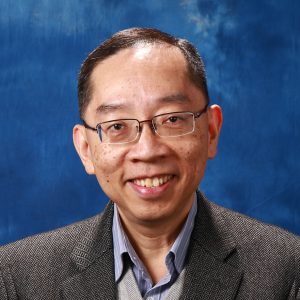
Adjunct Professor at the Department of Biomedical Engineering
Office: (852) 3943 8268
Email: arthurmak@cuhk.edu.hk
Address: Room 410, Ho Sin Hang Engineering Building, The Chinese University of Hong Kong
Research Interests
Biomaterials & Biomechanics in Tissue Engineering; Multiscale Mechanics in Tissue Damage and Regeneration; Musculoskeletal & Orthopedic Biomechanics; Motor Control in Human Motions; Biomechanics of Pressure Ulcers & Deep Tissue Injuries; Rehabilitation Engineering.
Deep tissue injury due to prolonged excessive skin loadings can lead to clinical pressure ulcers, affecting millions of persons with physical disability. How skin loadings are transmitted to deep tissues, and how stresses at the tissue level invoke cellular damages require objective-specific in-silico simulations, as well as careful in-vivo and in-vitro studies. Our findings suggest interesting implications of damage vulnerability at the cellular level under prolonged oxidative exposure during chronic inflammation at the tissue level, and the potential benefit of intermittent vibration and poloxmamer-188 to the risk management of deep tissue pressure ulcers.
Selected Publications
- Duan XX, Mak AFT, Wan JMF. “Oxidative Stress Alters the Morphological Responses of Myoblasts to Single-site Membrane Photoporation.” Cellular and Molecular Bioengineering, 2017, DOI: 10.1007/s12195-017-0488-5.
- Wong SW, Cheung BCH, Peng BTK, Kwong A, Chung A, Lee KKH, Mak AFT. “Intermittent Vibration Protects Aged Muscle from Mechanical and Oxidative Damage under Prolonged Compression.” J Biomechanics, 2017; 55(11):113-120.
- Wong SW, Yao YF, Hong Y, Ma ZY, Kok SHL, Sun S, Cho M, Lee KKH, Mak AFT. “Preventive effects of poloxamer 188 on muscle cell damage mechanics under oxidative stress.” Annals of Biomedical Engineering, 2017; 45(4):1083–1092.
- Yao YF, Ong LXD, Li XT, Wan KL, Mak AFT. “Effects of Biowastes Released by Mechanically Damaged Muscle Cells on the Propagation of Deep Tissue Injury: A Multiphysics Study.” Annals of Biomedical Engineering, 2017; 45(3):761–774.
- Yao YF, Mak AFT. “Strengthening of C2C12 mouse myoblasts against compression damage by mild cyclic compressive stimulation.” J Biomechanics, 2016; 49(16):3956-3961.
- Yao YF, Lacroix D, Mak AFT. “Effects of oxidative stress-induced changes in the actin cytoskeletal structure on myoblast damage under compressive stress: confocal-based cell-specific finite element analysis.” Biomechanics and Modeling in Mechanobiology, 2016; 15(6):1495–1508.
- Lau EOC, Lo CY, Yao YF, Mak AFT, Jiang L, Huang Y, Yao XQ. “Aortic Baroreceptors Display Higher Mechanosensitivity then Carotid Baroreceptors.” Frontiers in Physiology, 2016; 7:384. DOI: 10.3389/fphys.2016.00384.
- Hong Y, Yao YF, Wong SW, Bian LM, Mak AFT. “Change in viability of C2C12 myoblasts under compression, shear and oxidative challenges.” Journal of Biomechanics, 2016; 49:1305-1310.
- Ma ZL, Wu YQS, Mak AFT. “Rheological Behavior of Actin Stress Fibers in Myoblasts after Nanodissection: Effects of Oxidative Stress.” Biorheology, 2015; 52:225-234.
- Duan XX, Chan KT, Lee KKH, Mak AFT. “Oxidative Stress and Plasma Membrane Repair in Single Myoblasts after Femtosecond Laser Photoporation.” Annals of Biomedical Engineering, 2015; 43(11): 2735-2744.
